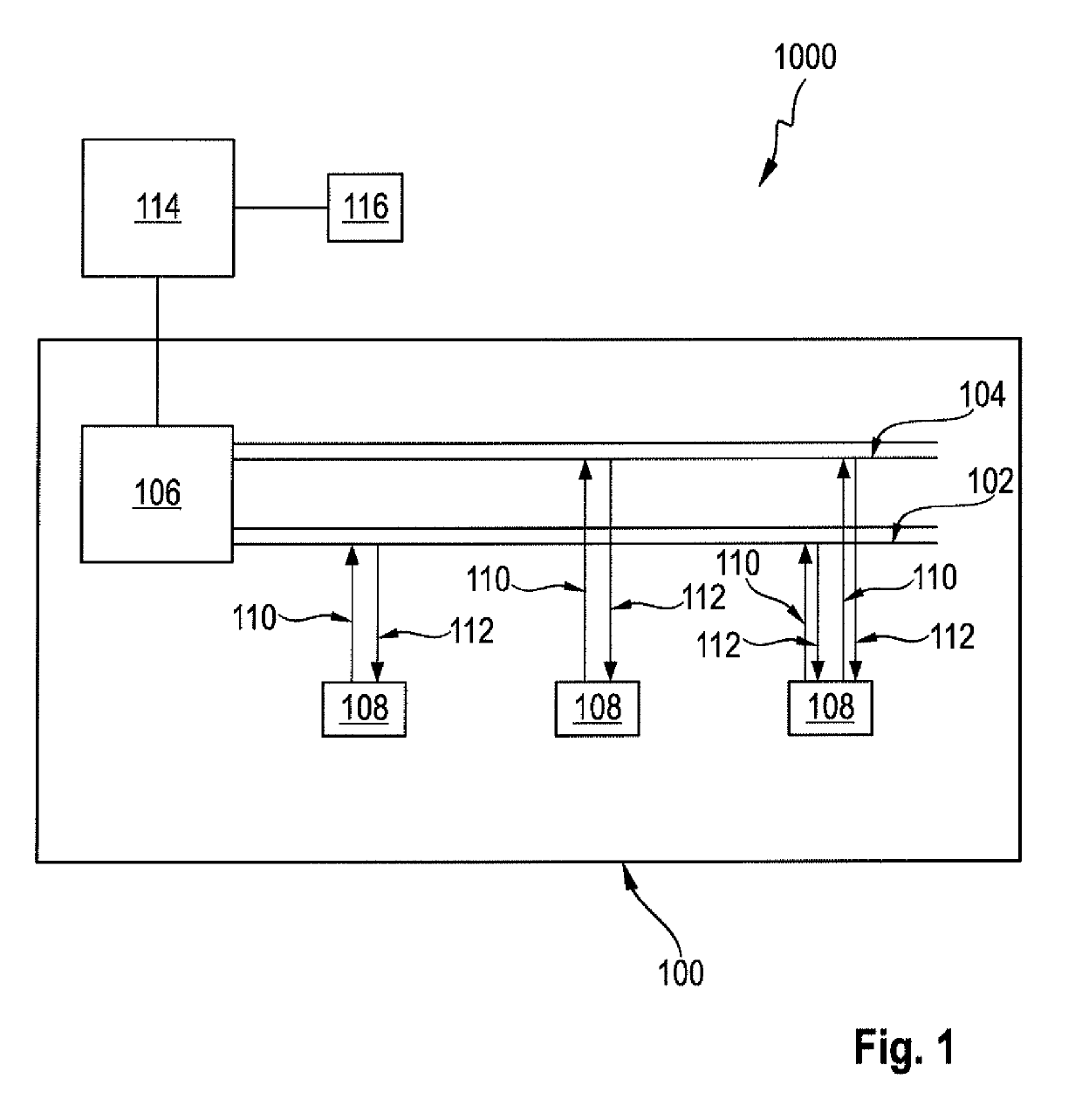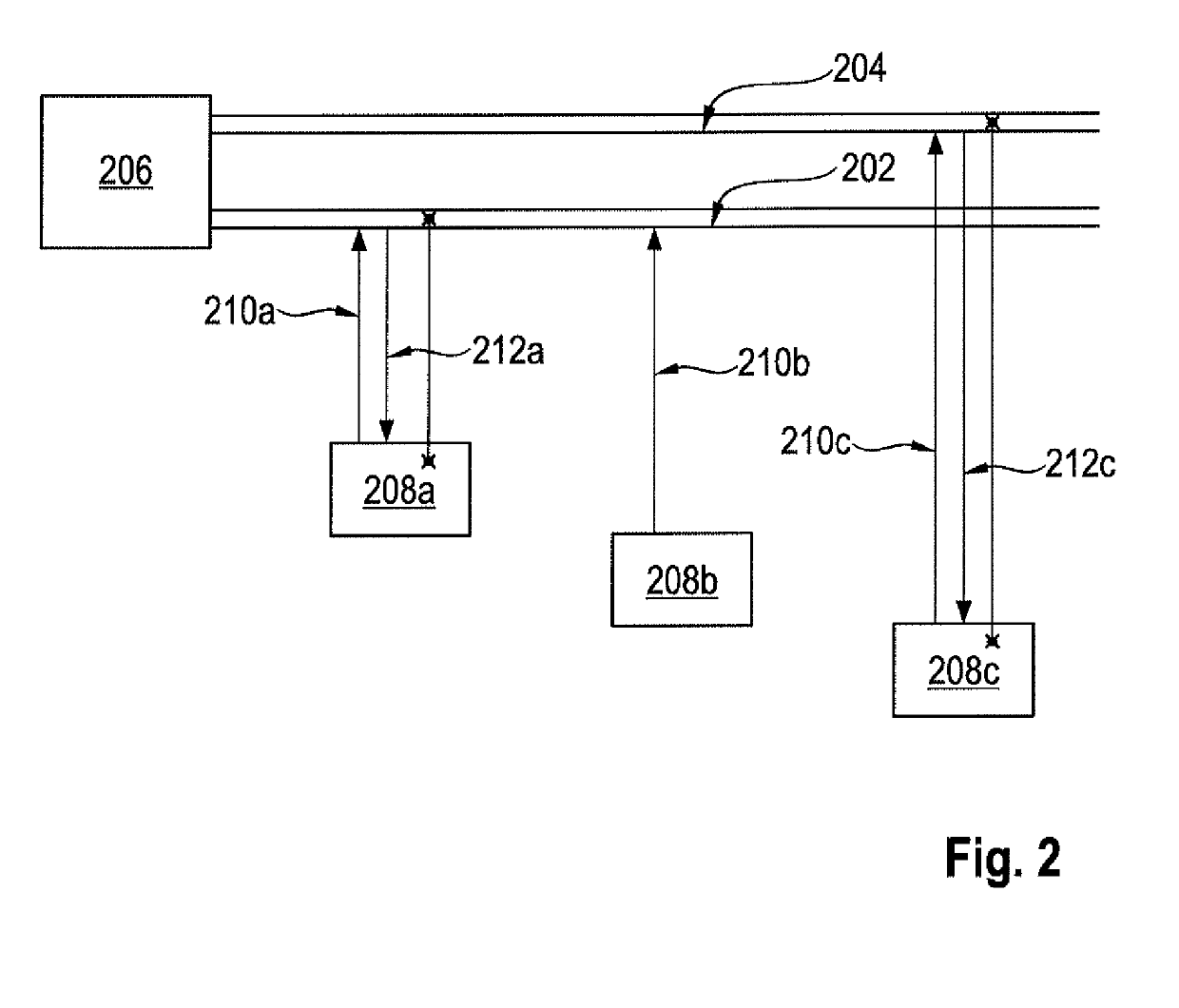Band steering wi-fi direct client connections to dual band wi-fi direct autonomous group owner
- Summary
- Abstract
- Description
- Claims
- Application Information
AI Technical Summary
Benefits of technology
Problems solved by technology
Method used
Image
Examples
Embodiment Construction
[0032]A typical Wi-Fi network consists of several remote client devices, radio channels or bands and access nodes on the radio bands. Wi-Fi Direct or Wi-Fi Peer-to-Peer (P2P) client devices or remote client devices discover the access nodes on a remote device by a standard Wi-Fi Direct discovery phase. During the discovery phase, the Wi-Fi Direct client devices send a probe request packets to the access node and the access node responds back with probe response packets. During this, the client devices scan all available Wi-Fi channels by transmitting probe request packets on the channels trying to connect to an access node on the wireless network. A dual band supporting client device would scan all 2.4 GHz and 5 GHz radio bands or channels whereas a single band client would scan only 2.4 GHz channels. A single band access node supports only a single band, for example either a 2.4 GHz band or a 5 GHz band, whereas a dual band access nodes supports both the radio bands.
[0033]A 5 GHz a...
PUM
 Login to View More
Login to View More Abstract
Description
Claims
Application Information
 Login to View More
Login to View More - R&D
- Intellectual Property
- Life Sciences
- Materials
- Tech Scout
- Unparalleled Data Quality
- Higher Quality Content
- 60% Fewer Hallucinations
Browse by: Latest US Patents, China's latest patents, Technical Efficacy Thesaurus, Application Domain, Technology Topic, Popular Technical Reports.
© 2025 PatSnap. All rights reserved.Legal|Privacy policy|Modern Slavery Act Transparency Statement|Sitemap|About US| Contact US: help@patsnap.com



